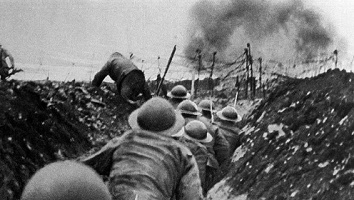What is the rural population?
We explain what a rural population is and what are its main characteristics. In addition, their differences with the urban population.
-
What is the rural population?
When we talk about the rural population we refer to those sectors of a country or region that make life outside the cities , in geographic sectors of low population density and whose usual economic activities tend to agricultural. These rural regions tend to be much more extensive than urban ones, and depending on the degree of development of the country they may be more or less poor than their urban counterparts.
The rural population is as old as human civilization itself . In fact, the first permanent settlements of humanity (that is, the abandonment of nomadism) arose from the hand of agricultural activity and domestication, since it was much more productive to remain in the same place and exploit the soil , than wander the Wait for food .
Currently, in the post-industrial world, rural populations are the majority in less developed and industrialized countries , that is, in those with the most dependent economies . On the other hand, in the countries of the so-called “First World”, the predominance of the urban population, whose food comes from external regions, is notorious. Similarly, from a global perspective, urban life is much more abundant than rural life.
-
Characteristics of the rural population

The rural population can vary significantly from one region to another or from one country to another , but it usually always has some more or less related characteristics. Historically, the rural population usually lives in larger families , since the birth rate is higher than in the cities , and therefore they tend to be very young populations, economically oriented towards agricultural work or livestock. His contact with nature is constant, and his day is determined by the biological clock.
However, in recent times, the rural population had to face the lack of exploitable land that guaranteed their growth and the low profitability of their products compared to the technologies or products produced from the industrial society , eminently urban. Thus, there was a worldwide rural exodus towards the cities, accelerating the urbanization process and leaving the countryside either in the hands of few families of landowners, large agricultural companies , or failing that of various types of agricultural associations that, in some cases, they barely exceed the subsistence economy.
In the Third World countries, in addition, the agricultural population is usually much poorer than the urban population , facing peripheral, marginal living conditions, with very low economic income and a relative isolation from state services .
-
Differences between rural and urban population

The rural and urban population are distinguished in numerous aspects, the most important being that related to food production. The cities are not good or large producers of food , for which they require agricultural inputs from the countryside. In that sense, cities are very dependent on the rural population, but at the same time the products manufactured in urban factories have an added value that, despite relying on the raw material of the field, makes them much more expensive.
On the other hand, cities consume much more energy than agriculture , and it is these and not the countryside where the political power resides and the State instances are established: ministries, embassies, centers of power, etc. Despite this, the urban population often lives more hectic, less healthy lives, exposed to much higher levels of pollution and stress , so it is not surprising that they live less. Even so, the distribution of work in urban society is much more diverse than in rural society, centered on the primary sector . The secondary , tertiary and quaternary are generally linked to the industrial population of the city.
-
Rural population of Mexico
As it is in many other countries of Latin America, the Mexican population has an eminently agricultural history, since the colonial society established by the Spanish Crown in the 16th century was of the extractivist type: cultivate and exploit the resources of the American soil to send their resources to the European metropolis . This development model was maintained despite independence, to the point that its nineteenth-century and more contemporary conflicts such as the Mexican Revolution were, in essence, conflicts over land tenure.
Despite intense modernization campaigns by governments such as Benito Juárez, until 1950, little more than 57% of the Mexican population lived in rural areas , many in conditions of extreme poverty. This figure has decreased over the course of the twentieth century, down to 29% in 1990 and 22% in 2010. Most of the population is concentrated in the states of the southern part of the country: Oaxaca, Chiapas and Tabasco , but also Zacatecas, Hidalgo, San Luis Potosí and Veracruz.
There is also a link between indigenous communities and rural life , so that most of the remaining original communities retain their traditional ways of life, linked to agriculture and the exploitation of endemic species.




